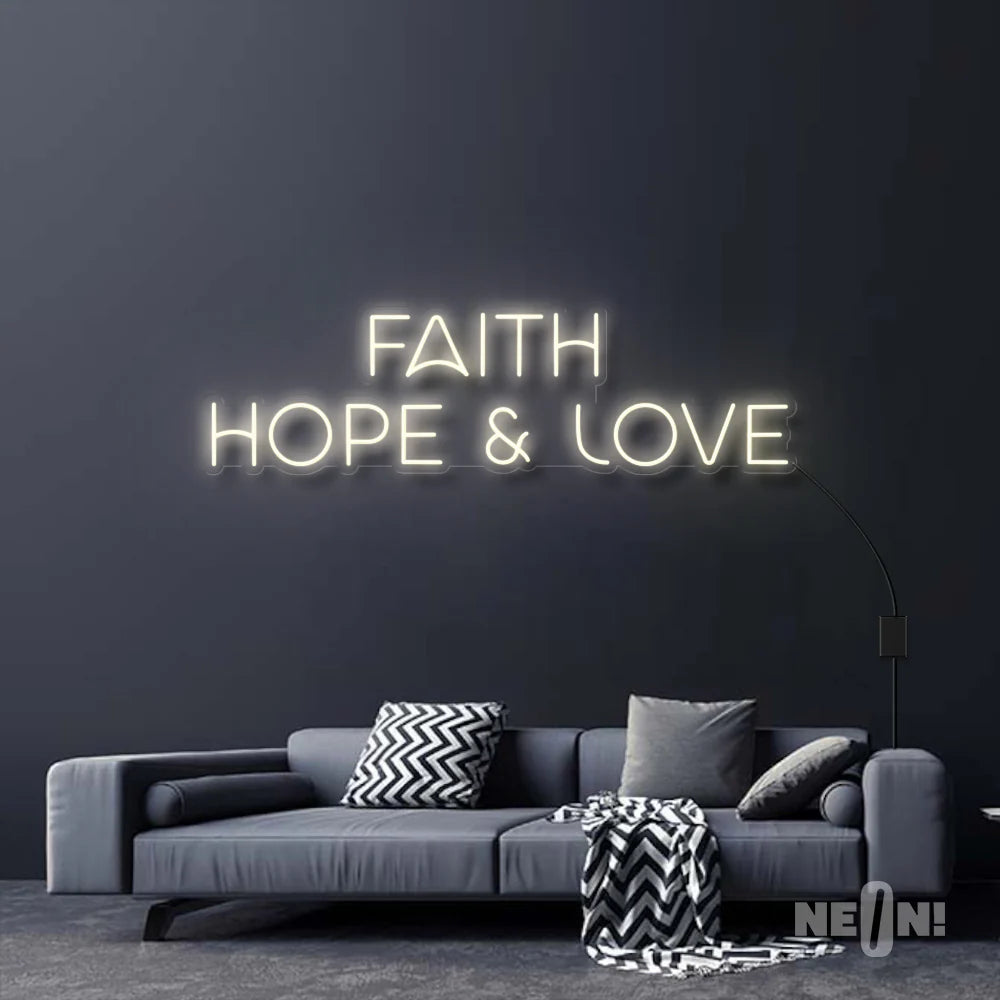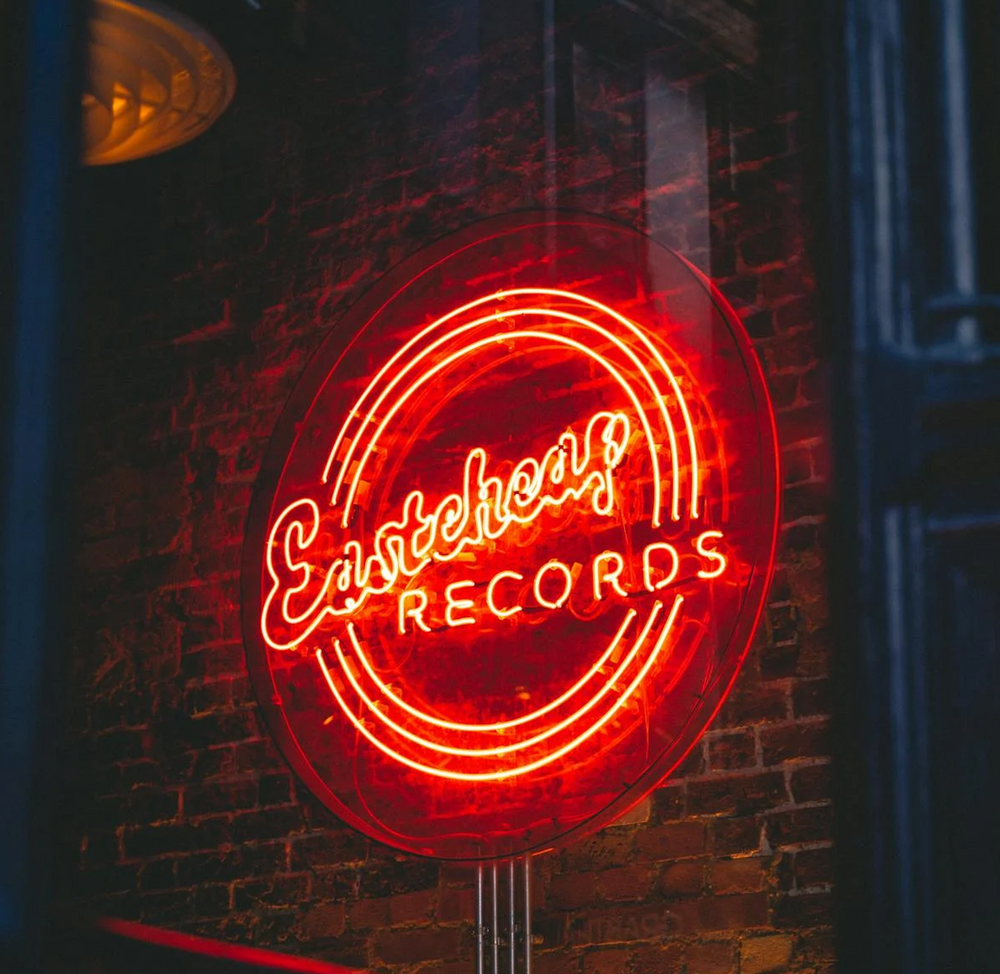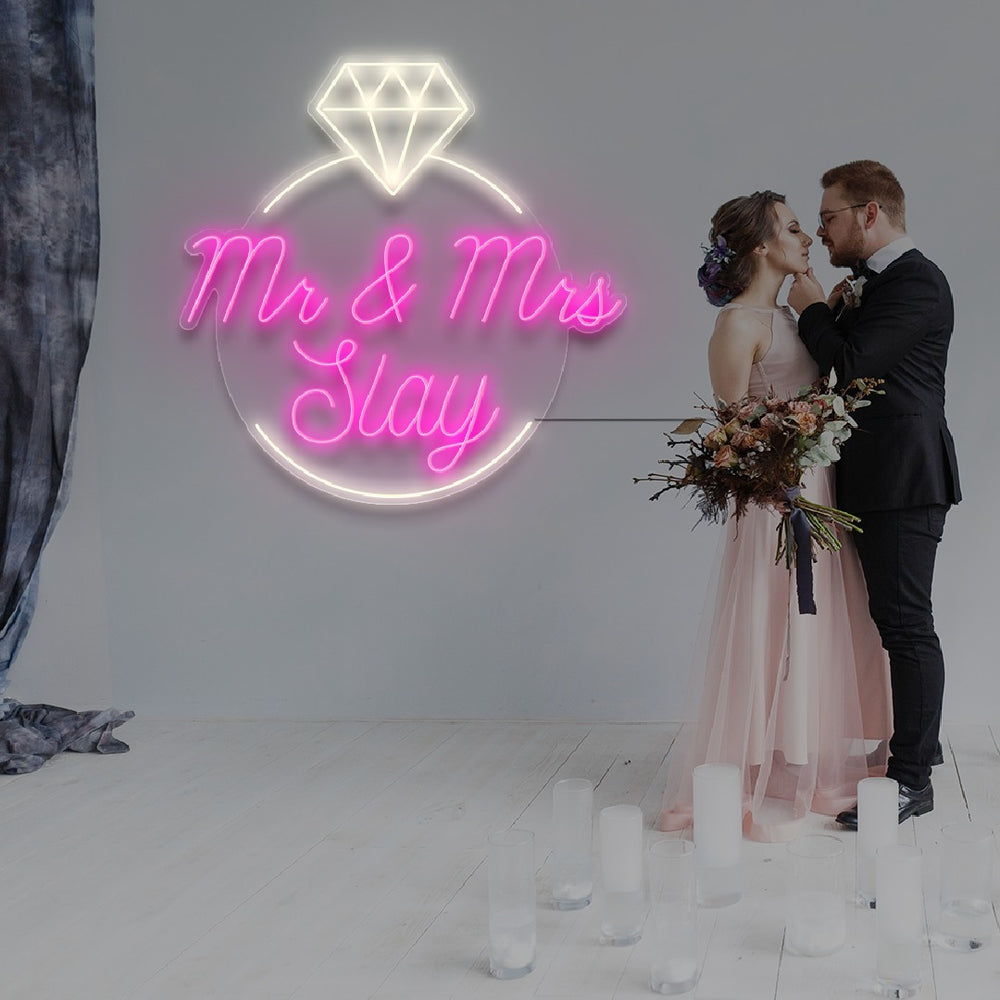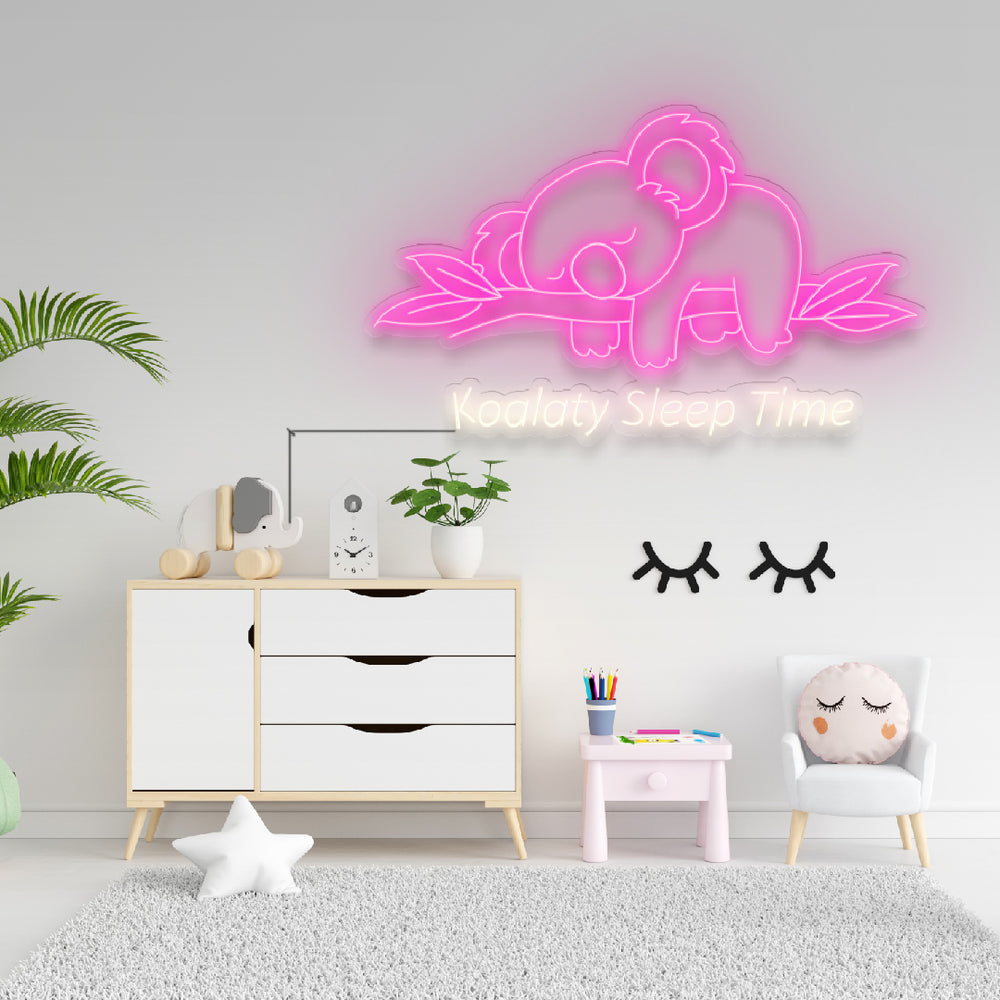
In this article we’ll answer the most frequently asked questions that people may have about neon lights. Let’s dive in!
Is flex neon better than glass neon signs?
Flex neon and glass neon signs both have their advantages and disadvantages. Flex neon is made of high-quality PVCs and is more flexible, lightweight, and easy to handle than glass neon.
It is also more energy-efficient than glass neon because it uses LEDs instead of gas. Flex neon is also cheaper and more accessible than glass neon, making it a popular choice for businesses and homeowners.
Glass neon signs are handcrafted and require a skilled artisan to create them, which makes them more expensive and less accessible. Glass neon signs are also more fragile and can be more challenging to handle and install.
How do neons emit light?
Neon lights work by passing an electric current through a gas, typically neon, to create a glowing light. When the electric current passes through the gas, it excites the gas atoms, causing them to release energy in the form of light.
What is the environmental impact of neon signs?

Neon gas, like all noble gases, is chemically inert and does not react with other substances in the environment. Buyers can choose energy-efficient options such as LED neon lights, which use less energy and last longer than traditional neon lights.
For example, we use LED Flex, which is free from hazardous gases and mercury.
What is the durability and maintenance of neon lights?
Neon lights are relatively durable and can last for many years with proper maintenance. LED lights have a longer lifespan than traditional neon signs, but regular maintenance is essential to ensure the longevity of neon lights. Cleaning the glass tube on a regular basis can help prevent dust building up and maintain the brightness of the light. Proper handling and storage of neon lights can also prevent damage.
In the event of a malfunction, neon lights should be repaired by a professional to avoid further damage or any personal injury.
How long do neon signs usually last?
The standard lifespan for neon lights is 50,000 hours, which is approximately five years.
Are neon signs safe to use?
LED flex signs are safe and don't contain mercury or toxic gases. They are also durable and won't heat up.
Can you use neon signs during the day?

Yes, neon signs can be used during the day, but their visibility may be reduced compared to when they are used at night. This is because neon signs are designed to emit light that can be seen in low-light or dark conditions.
During the day, natural sunlight can overpower the light emitted by the neon sign, making it less visible. However, some neon signs may still be visible during the day depending on their design, colour and placement.
How much does a neon light cost?
The cost of a neon light can vary depending on several factors, such as the size and complexity of the design. They can cost anywhere from around $200 to $1000.
Is neon gas toxic?
Neon gas itself is not toxic, but it can be dangerous if not handled properly.
Is neon gas combustible?
No, neon gas is not combustible.
Are LED neon flex signs dangerous?
LED neon flex signs are considered safer than traditional neon signs. They operate at a lower voltage and do not contain glass tubes filled with gas.
Can I replace a single tube in a neon light?
Yes, individual tubes can be replaced in neon lights, but it requires specialised knowledge and equipment to do so safely.
Can neon lights be dimmed?
Yes, neon lights can be dimmed, but it requires the use of a dimmer switch specifically designed for use with neon lights.
How do I clean a neon light?
To clean a neon light, first turn off the power and allow the tubes to cool. Then gently wipe the tubes with a soft cloth dipped in water.
Can neon lights be used outdoors?

Yes, neon lights can be used outdoors, but they require weatherproofing to protect them from natural elements such as rain or snow.
Can I make my own neon light sign?
You can create your own custom design with our help. We have developed an easy-to-use design tool for neon signs that is available for you to use.
What are some common uses for neon lights?

Neon lights have a variety of common uses, including:
- Advertising and signage: Neon lights are often used for eye-catching advertising and signage for businesses, such as storefront signs, open signs and directional signage.
- Decorative lighting: Neon lights are also popular for decorative lighting purposes, such as in bars, restaurants, offices and homes.
- Artistic displays: Neon lights are commonly used in artistic displays and installations that can be found in museums and galleries.
How do I install a neon light?
The signs come with pre-drilled holes, making the hanging process very easy. You don't need to worry about mounting the signs because they practically mount themselves when you open the box. Additionally, for a few extra dollars, you can get a wall mounting kit if you want to hang the sign like a professional.
Do neon lights require a lot of electricity to run?
Neon lights require a moderate amount of electricity to run, but their power consumption can vary. For example, the power consumption of traditional neon lights is about 400 watts, while LED lights consume only 150 watts.
How bright are neon lights?
The brightness of neon lights can vary depending on factors such as the size of the sign, the number of neon tubes used, the colour of the neon gas, and the placement of the sign.
However, in general, neon lights are known to be bright and vibrant. Their eye-catching illumination makes them popular for use in advertising and artistic displays. LED lights are more attention-grabbing as they are brighter and visible even during the day, while neon signs made of glass tubes have a softer glow that is more noticeable at night.
Can neon lights be repaired if they stop working?
Yes, neon lights can be repaired if they stop working. The process typically involves replacing a faulty transformer. However, repairing a neon light should only be done by a professional, as working with the high voltage used in neon lighting can be dangerous.
What colours do neon lights come in?

Neon lights can come in a variety of colours, including red, blue, green, yellow, orange, and purple. Different colours can be achieved by using different gases or by coating the tubes with different phosphor materials.
How do I know if neon lights are the right size for my space?
To determine the right size of a neon light for your space, consider the following:
- Measure the available space: Measure the area where you plan to hang the neon light, taking into account any obstructions or other features that may affect the placement.
- Consider the design: Think about the design of the neon light and how it will fit within the space. For example, If it has a long and thin shape, it may look best hung horizontally rather than vertically.
- Decide on the brightness: Consider the brightness of the neon light and how it will affect the overall atmosphere of the space. A larger neon light may be necessary for a dimly lit room, while a smaller light may be more appropriate for a brighter space.
- Check the manufacturer's recommendations: Consult the manufacturer's specifications for the neon light you are considering to ensure that it is suitable for the size of the space you have in mind.
Do neon lights produce heat?
Yes, neon lights do produce some heat, but it is minimal compared to other types of lighting.
Can I customise the design of a neon light sign?
Yes, you can customise the design of a neon light. We offer custom designs and allow you to choose the colours and shapes you want.
How do I transport a neon light safely?
To transport a neon light safely, it should be carefully packed and protected with bubble wrap or packing foam. It is also recommended to use a padded carrying case or box to prevent any damage during transport.
What is the difference between neon lights and LED lights?
The main difference between neon lights and LED lights is the type of lighting technology used. Neon lights use gas-filled glass tubes that emit light when electrified, while LED lights use a semiconductor material that emits light when a current passes through it.
Can neon lights be used as a primary light source?
No, neon lights are not typically used as a primary light source. They are often used for decorative or advertising purposes.
How do I dispose of a broken or unwanted neon light?
Broken or unwanted neon lights should be properly disposed of at a recycling centre or hazardous waste facility. They should not be thrown in the regular trash.
How do I store a neon light if I'm not using it?
To store a neon light when not in use, it should be carefully wrapped in packing foam or bubble wrap, and placed in a dry, cool place away from direct sunlight.
How do I prevent a neon light from flickering?
A neon light can flicker if there is a problem with the power supply or if the electrodes are dirty. To prevent flickering, make sure the power supply is functioning properly and keep the electrodes clean.
How do I determine the voltage of a neon light?
The voltage of a neon light can be determined by checking the label on the power supply or by consulting the manufacturer's specifications.
Can I cut or modify a neon light tube?
It is not recommended to cut or modify a neon light tube as it can be dangerous and may damage the tube.
Are neon lights eco-friendly?
Neon lights are not considered eco-friendly as they use gas and electricity and can contain hazardous materials. However, our neon LED lights are an eco-friendly alternative, as they don’t use gas and are energy-efficient.
If you have any other questions that haven’t been answered here, get in touch with us! If you’re ready to create your own neon light design, check out our easy-to-use online tool.






